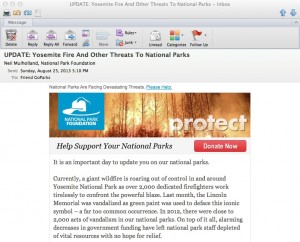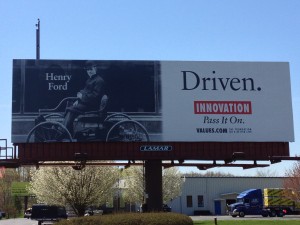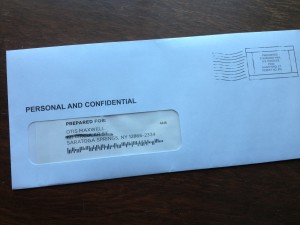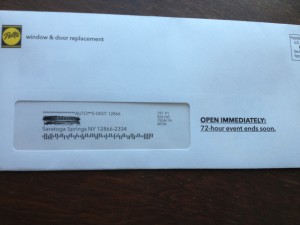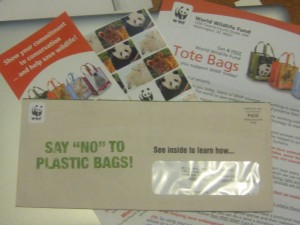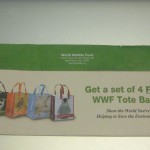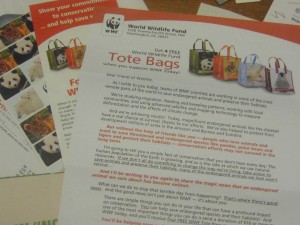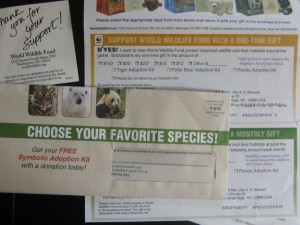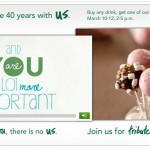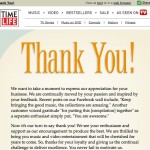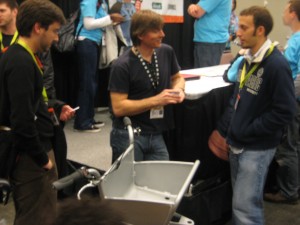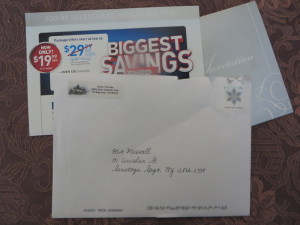
I got a Christmas card this week from Chris Thomas—or so I thought. I was intrigued by the seasonal address sticker and wondered who I knew in El Segundo, a community near LAX notorious for its predatory speed traps. I opened it up…and there was the familiar tent card invitation from DirecTV, which indeed has its corporate headquarters in that city.
The DirecTV invitation is successful judging by the frequency with which we all receive it; the question is whether this “made you look” twist on the outer envelope helps response. I’ll guess it does, because some people will open who otherwise wouldn’t, like me, and some of those may be in a mood to churn their TV subscription. But is there a negative effect from people who are irritated by the trickery and become LESS likely to respond in the future?
The same question applies to a graduate student’s marketing experiment described in yesterday’s Wall Street Journal (it’s a long article, and this example is way down at the end). The researcher noticed that when a Salvation Army bell ringer was posted at one entrance of a mall store, shoppers would go out of their way to use the other entrance. He then posted solicitors at both entrances and had them directly request donations from some shoppers, and not from others.
Shoppers who were directly asked for donations were 60% more likely to give. That would seem to be a big win for the Salvation Army. But what about people who were irritated by the pressure and less likely to donate in the future (or maybe to visit that store)? Donors have memories and if you create a negative impression, does it hurt you in the long term?
I’d love to hear from readers who have some experience or thoughts on this. For me it goes back to my early experience with subscription and catalog direct mail when we definitely saw fatigue; mail somebody too often and they become less likely to respond, now or ever. I’m sure there is a negative effect from pushing too hard, and I’d like to know how organizations are factoring it into their fundraising.
